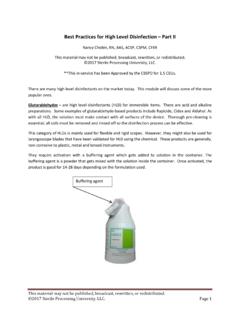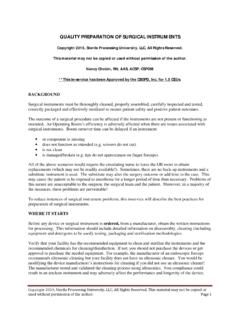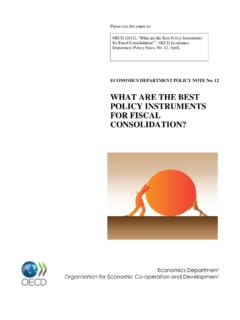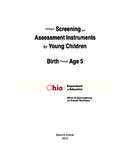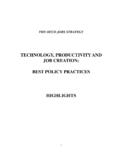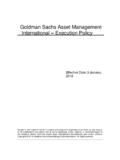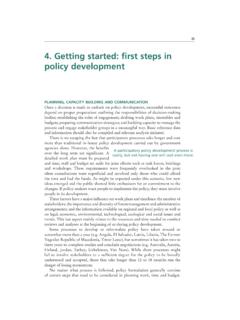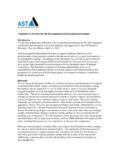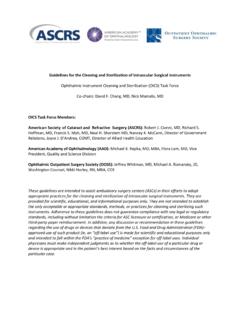Transcription of Accountability for Surgical Instrument Processing …
1 Copyright 2015, Ste rile Processing University, LLC, All Rights Reserved. This material may not be copied or used without permission of the author. Page 1 Accountability for Surgical Instrument Processing From the OR to SPD and Back to the OR Copyright 2015, Sterile Processing University, LLC, All Rights Reserved. This material may not be copied or used without permission of the author. Nancy Chobin, RN, AAS, ACSP, CSPDM **This in-service has been Approved by the CBSPD, Inc. for CEUs. Objectives To understand the protocols for handling and accounting for Surgical instruments in the OR after surgery To identify the best practices for handling instruments in the Decontam area to prevent loss and enhance cleaning To know the best practices for Instrument inspection, testing and quality testing Background- Surgical instruments The quality of steel determines the quality of the Instrument .
2 US and German steel are considered the best. The base steel is critical to the quality of Instrument . Therefore, you need to know the origin of the base steel. It is also important to understand that not all instruments labeled Surgical grade are created equal. Grades/Finishes There are two grades of Surgical instruments ; Surgical grade and floor grade (usually referred to as Pakistani). The floor grade instruments lack fine detail and precision; they break and corrode quickly and are not suitable for the OR. There are several types of finishes; shiny - reflects light ( chrome); dull/satin - does not reflect light and ebonized/black (used for laser surgery). Anatomy of an Instrument The parts of a basic Surgical Instrument include: Jaws the working end of the Instrument .
3 The jaws make contact with the patient. The configuration of the jaw determines its function and helps identify its name. Copyright 2015, Ste rile Processing University, LLC, All Rights Reserved. This material may not be copied or used without permission of the author. Page 2 Box Lock (also known as the hinge). There are three parts; male part, female part and the pin which secures the male and female parts together. The box lock is the weakest part of the Instrument and the most difficult to clean. Shanks run from the box lock to the finger rings. They provide the closing force for the Instrument . The longer the shanks the greater the closing force of the jaws. Ratchets located above finger rings on the shanks.
4 The ratchet locks the Instrument . } Finger rings Are located at the opposite end of the Instrument from the jaws. Fingers are placed here for control. ANATOMY OF A Surgical Instrument Types of instruments There are many types of Surgical instruments including (but not limited to): General Surgical instruments Specialty instruments Laparoscopic instruments Robotic instruments Endoscopic Equipment Instrument Manufacture There are over 17 steps in the manufacturing of instruments . There are only 25 artisans remaining who perform the fine craftsmanship needed to manufacture Surgical instruments . Most of the work is performed manually! matter how talented the surgeon, surgery cannot be performed without properly cleaned, assembled, tested and functional instruments !
5 Jaws Box Lock Shank Ratchet Finger ring Copyright 2015, Ste rile Processing University, LLC, All Rights Reserved. This material may not be copied or used without permission of the author. Page 3 How to Protect instruments At end of each case, place all instruments in their respective container (basket or tray) and spray with enzyme foam or gel. If the set has a protective container, place all instruments in their designated location to protect them from damage in transport. Do not stack instruments unless in they are in a rigid container; otherwise damage can occur to the instruments . Avoid exposure to saline and bleach; both of which are corrosive to Surgical instruments . If saline must be used during case, immediately rinse the Instrument (s) with sterile water.
6 Protect delicate items and items with fine/sharp tips by keeping them separated from regular instruments . Place heavier items on bottom and lighter items on top to protect from damage. Separate scopes from instruments ; the instruments can damage the lenses of the scopes. Clean instruments as soon as possible after use. Surgical instruments should always be used as intended. For example, only use dissecting scissors on tissue; only use suture scissors to cut suture and use tubing clamps to clamp tubings. See next page Copyright 2015, Ste rile Processing University, LLC, All Rights Reserved. This material may not be copied or used without permission of the author. Page 4 Would You Expect Damage?
7 The Association for the Advancement of Medical Instrumentation s Comprehensive Guide to Steam Sterilization and Sterility Assurance in Health Care Facilities (ANSI/AAMI ST-79) states: Care and handling of contaminated reusable items at point of use Contaminated reusable items should be handled as little as possible at the point of use. Soiled items should be immediately contained and transported to the decontamination area or soiled utility area, where cleaning procedures can be accomplished away from patient care. In many health care facilities, however, immediate containment, transportation, and cleaning might not be feasible, so gross soil should be removed at the point of use. Soil should be removed by a method that does not promote cross-contamination; a disposable sponge moistened with water (not saline) should be used to wipe gross soil from instruments .
8 Gauze sponges and similar items used in the cleaning process are contaminated and should be handled, contained, and discarded according to the health care facility s policy for infectious wastes. Gross soil is removed as soon as possible in order to (a) reduce the number of microorganisms on the item, (b) reduce the nutrient material that might support microbial growth, (c) reduce the potential for environmental contamination by aerosolization or spillage, and Copyright 2015, Ste rile Processing University, LLC, All Rights Reserved. This material may not be copied or used without permission of the author. Page 5 (d) minimize damage to devices from such substances as blood, saline, iodine, and radiological dyes or from the subsequent vigorous cleaning processes needed to remove encrusted material.
9 Not Acceptable Accountability There needs to be a system of traceability for all individuals who handled the instruments OR (for damage/loss issues) Copyright 2015, Ste rile Processing University, LLC, All Rights Reserved. This material may not be copied or used without permission of the author. Page 6 SPD for quality issues o Decontamination o Prep and Packaging o Sterilization o Distribution Biofilm formation Prompt cleaning reduces or eliminates the population of biofilm-forming microorganisms and thus prevents the formation of biofilm. Biofilm consists of an accumulated biomass of bacteria and extracellular material that is tightly adhered to a surface and cannot be removed easily. Biofilm has the effect of protecting microorganisms from attempts to remove them by ordinary cleaning methods used in the sterile Processing department.
10 Biofilm can form on many surfaces but is particularly problematic in devices with lumens. Once biofilm forms, direct friction and/or oxidizing chemicals are needed to remove it. AORN: Recommended Practices: Care of instruments instruments should be kept free of gross soil during Surgical procedures. Blood and body fluids can cause pitting of instruments . If blood is left to dry it can be difficult to remove. Preparation for decontamination should begin at the point of use. Removing gross soil and moistening soil at the point of use improves the efficiency and effectiveness of decontamination. Copyright 2015, Ste rile Processing University, LLC, All Rights Reserved. This material may not be copied or used without permission of the author.


